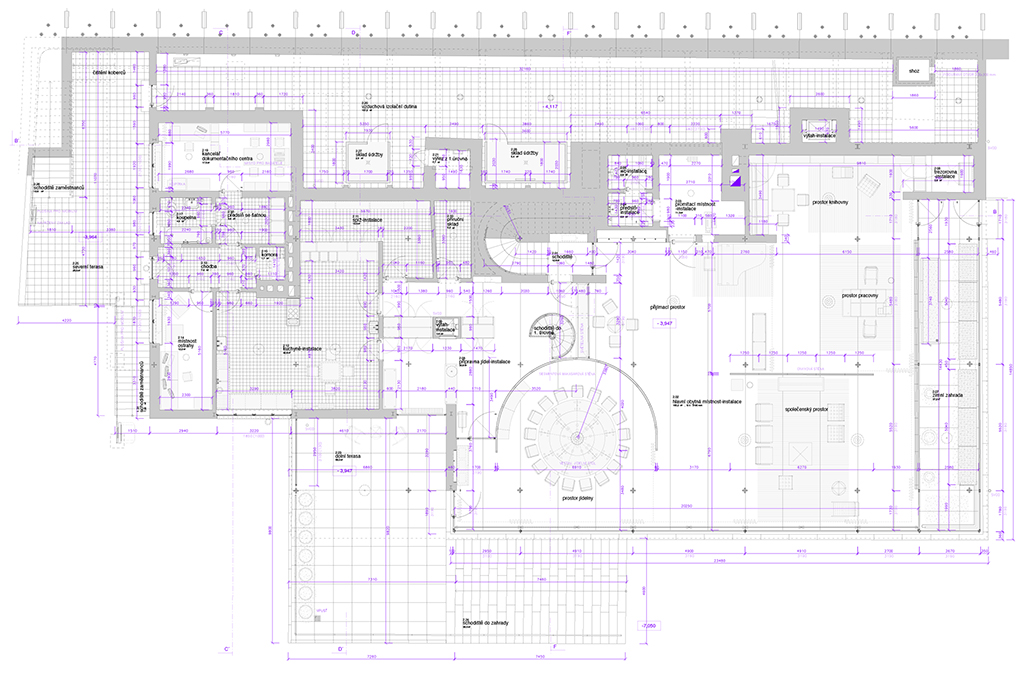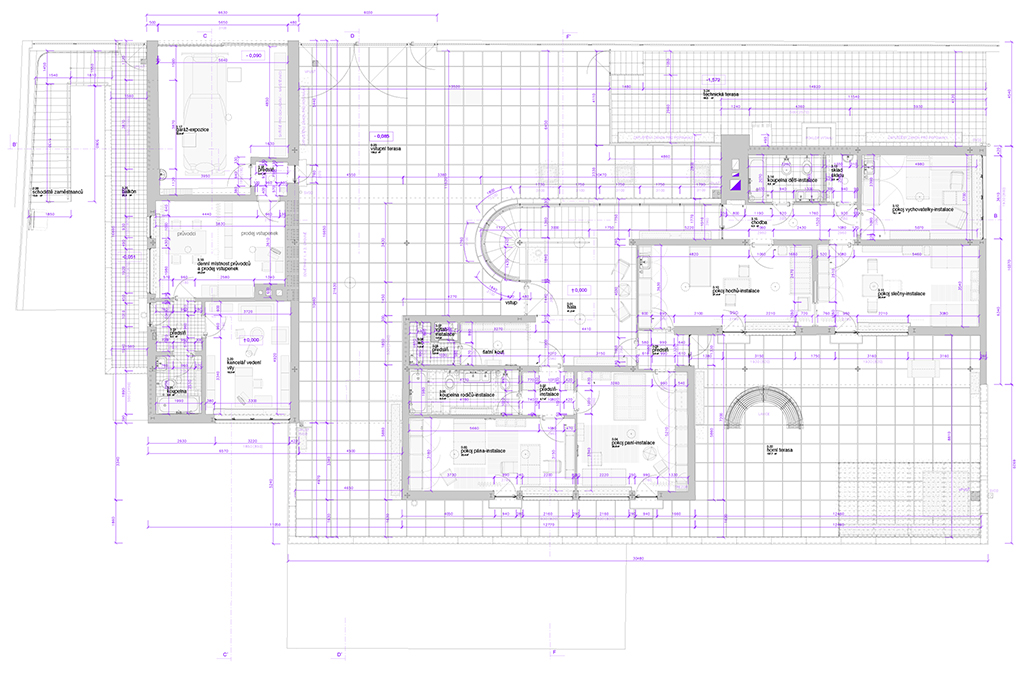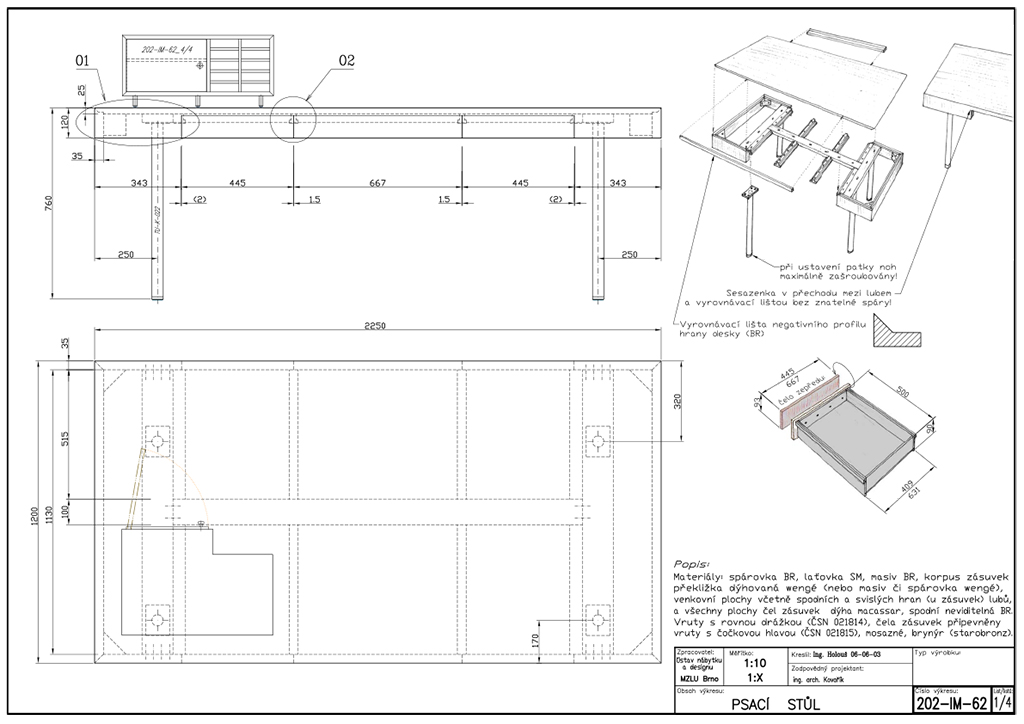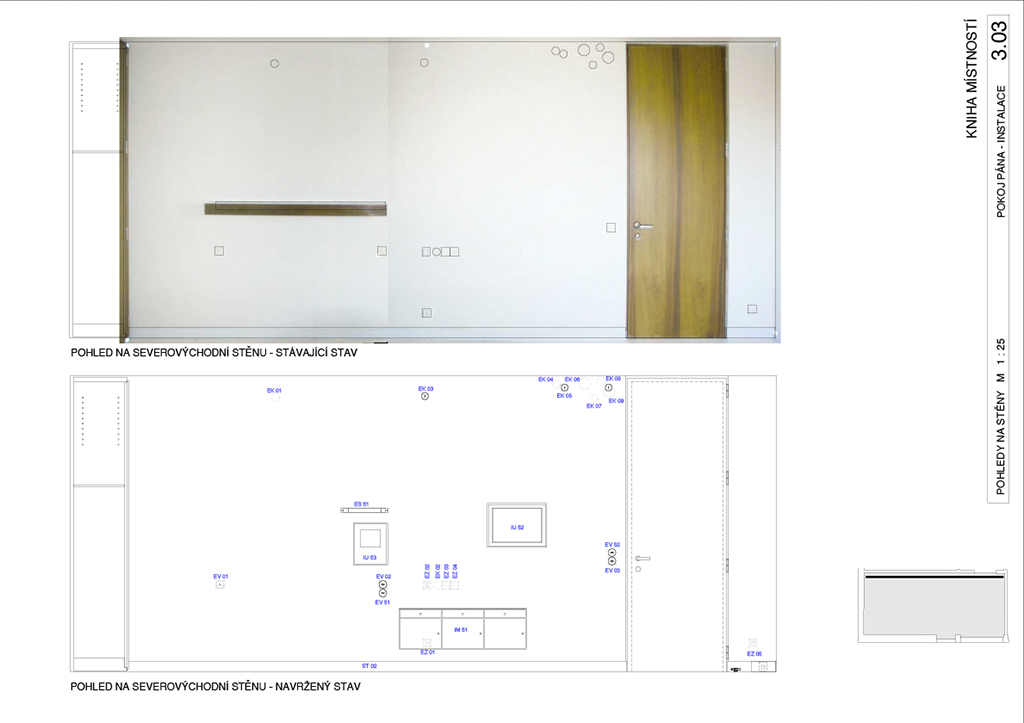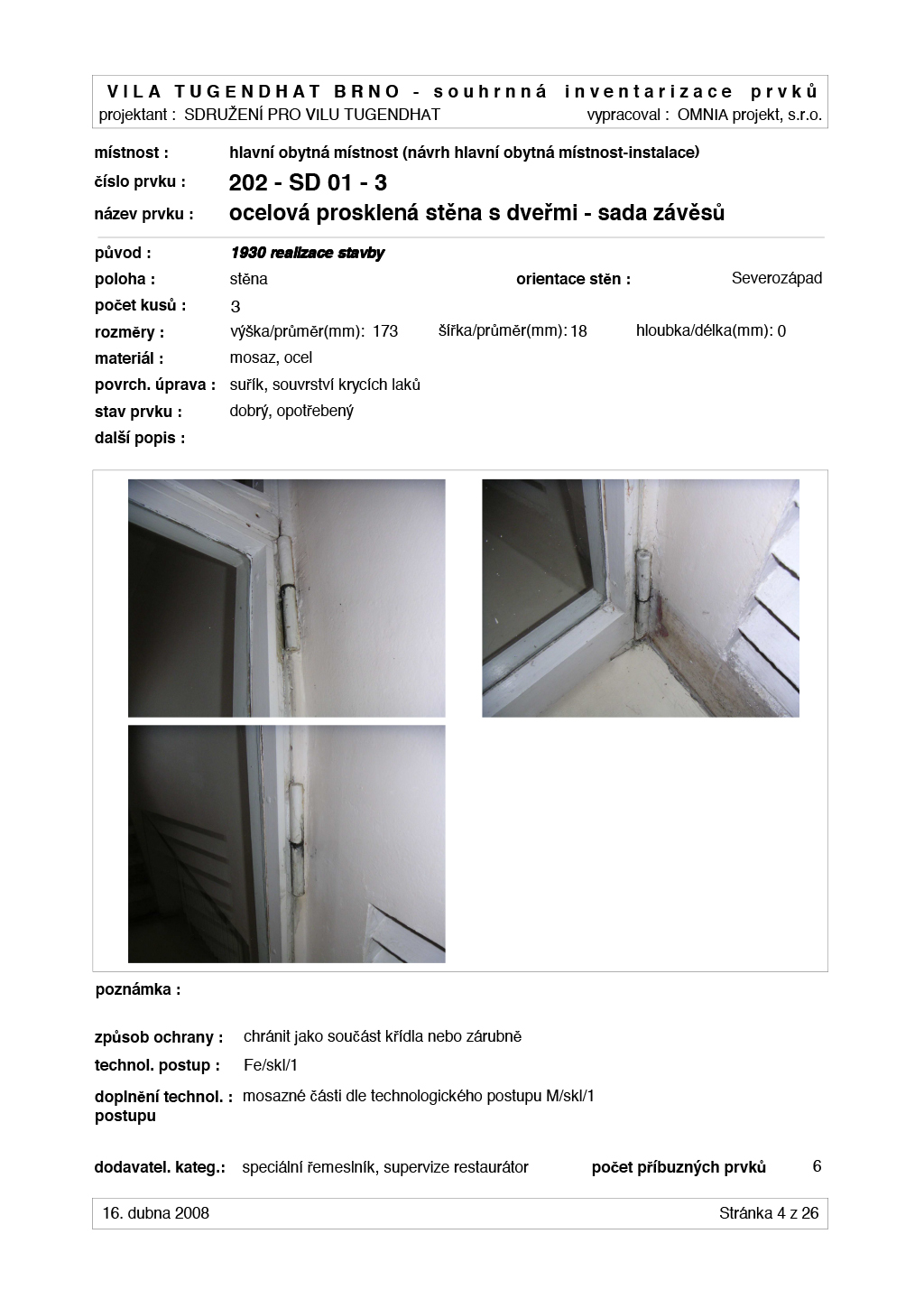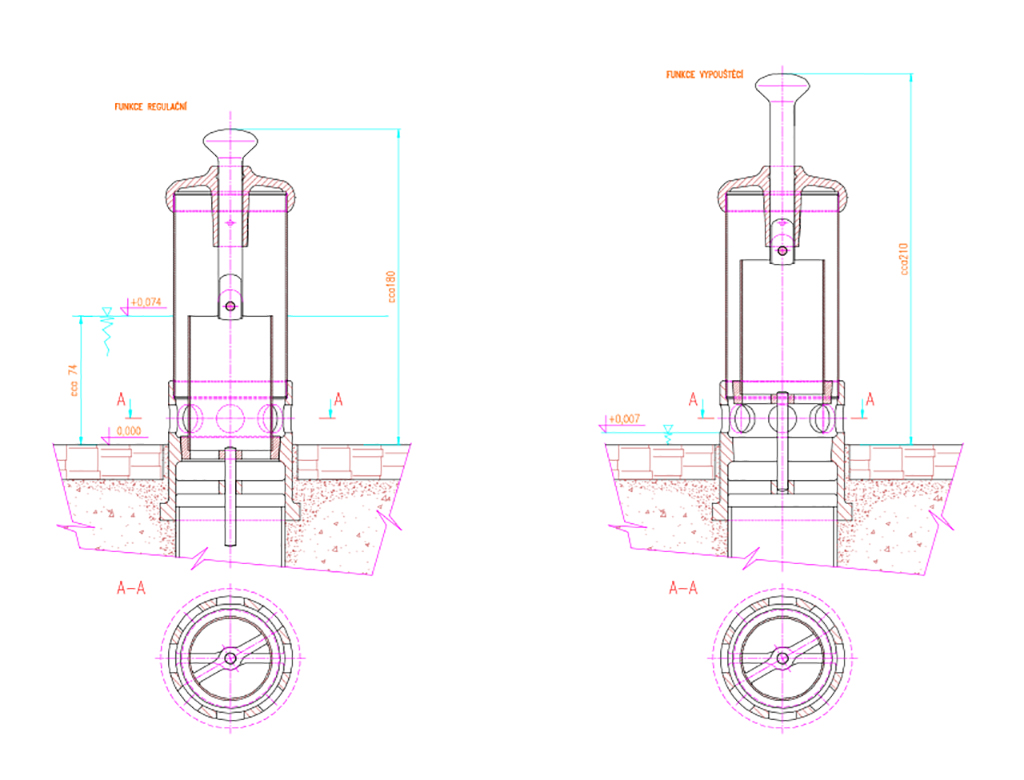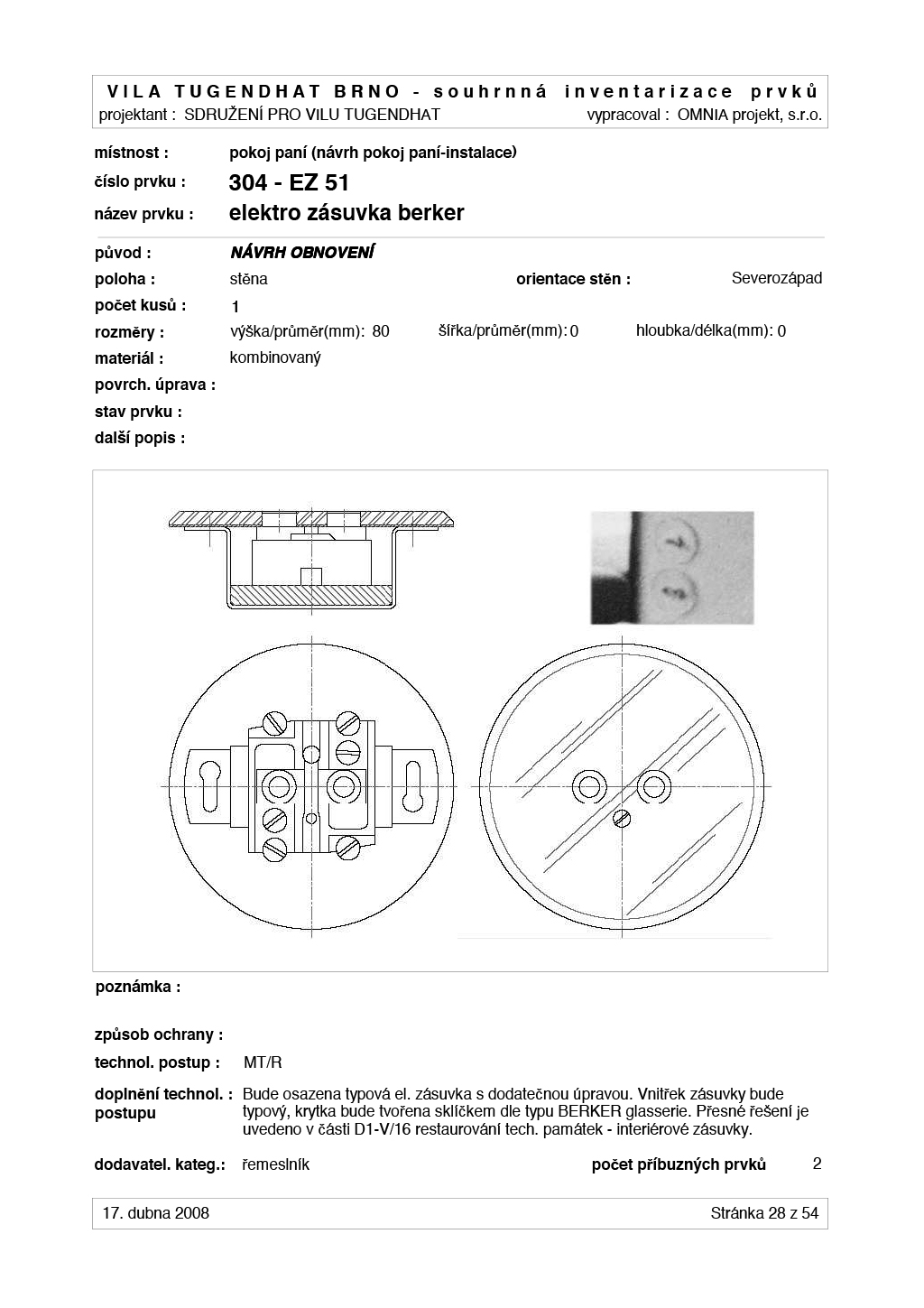PROJEKTOVÁ KAMPAŇ
The project preparation for the renewal of a key work of world Modernist architecture, Villa Tugendhat in Brno, was begun at the beginning of the year 2005. The full name of the project, prepared over the period of January 2005 up to September 2006, is The Project for Rehabilitation and Restoration of Villa Tugendhat. An association of three architectural studios was created for this task: OMNIA projekt, ARCHTEAM and RAW.
OMNIA projekt has at its disposal the main references in the area of restoration of cultural monuments including structures on the UNESCO List (rehabilitation of the Château in Kroměříž, restoration of the cladding of the Château in Lednice, conservation work on the cladding of the National Theatre in Prague) as well as references in the area of restoration of technical monuments. The studios ARCHTEAM and RAW are focused on modern architecture with a knowledge of Functionalism. A wider design team of specialists has thus come about, with on the one hand architects and technicians from the area of monument restoration which understandably amounts to the central point of the project and on the other hand architects who are involved in creating contemporary architecture. Issues such as the concept of monument restoration have been discussed in a team spirit as well as essential and significant approaches in contemporary architecture work.
The above-named authorial team consists of:
Ing. arch. Marek Tichý, specialised guarantor of the project, authorized expert in restoration of buildings
Ing. arch. Milan Rak, PhD, co-author
Doc. Ing. arch. Tomáš Rusín, co-author
Ing. arch. Petr Řehořka, co-author
Ing. arch. Alexandr Skalický, co-author
Ing. arch. Ivan Wahla, co-author
Ing. arch. Vítek Tichý, main engineer and project coordinator
Three stage documentation has been prepared in light of the significance of the project. The main basis for the project has been the research into the construction history prepared by a team of specialists from the National Monument Institute under the supervision of Karel Ksandr. A further source of information has been the ideal surveying of the building through the use of laser scanning and photogrammetry by the Geodis company prepared by hand by a draughtsman including all of the anomalies. The third source has been been and continues to be detailed multi-disciplinary restoration research led and supervised by Prof. Ivo Hammer. A collection of photographs of the family life in the house, during its happy period, lent by Daniela Hammer-Tugendhat the daughter of the commissioners of the Villa, has been a remarkably valuable source for reaching an understanding of the soul of the building.
CONCEPT FOR THE REHABILITATION OF THE MONUMENT:
The first stage of the project has been a study in which the concept of the renewal has been introduced. This tested the possibility for a maximum return to the original condition of the house from the period when Grete and Fritz Tugendhat lived there. All of the later adaptations have been evaluated as utilitarian and as mostly inappropriate. A concept for rehabilitation was suggested which would involve adapting the building back toward its essence to a slight degree, conservation of the essence and reverent supplementation of the missing parts of the essence through an in-depth analysis of the original design. The essence here is understood as all the material and surface value of the original, including the application of layers of initial use (up to World War II). It was consequently decided that the Villa will be equipped with all of the original furnishings, the majority of them in restored copies. The following facts were employed in the discussion regarding the justification of this concept:
This consists of a work by Ludwig Mies van der Rohe which ranks among his finest European realizations and has an almost cult character for Modernist architecture. The building is registered on the UNESCO List of World Cultural Heritage.
A remarkably high amount has been preserved from the original, almost all of the shape, a number of surfaces (now covered up), a range of elements and equipment. This work can consequently be considered the most authentic European work by the architect with its present expression not particularly distant from the intentions of the author. The level of the original substance is continually being discovered.
Adaptations from the war and post-war years were devastating and have in essence not been preserved, having been treated by the overall renewal work over the years 1981-1985. The only layer, therefore, partially encountered during the planned rehabilitation is the layer from the 1980s.
The study was completed in May 2005 and its concept consequently approved by the monument care bodies. The National Monument Institute organised an advisory commission of experts in June 2005 which evaluated the project as of high quality and additionally officially approved the overall concept.
A further stage – the project for building approval – is mainly focused on the renewal of the monument. The goal of the architects was to fulfil the task of the project so as to incorporate visiting operations into the rehabilitated monument without neglecting its original function, that being housing. The aim was to actually evoke the most intimate experience possible, as if one would actually visit an inhabited house. A similar task on the part of specialists consisted of the technical provisions for the restored Villa in harmony with its visiting operations.
The third stage was also prepared in accordance with the requirements of the monument bodies – the project for execution of the building (the so-called project implementation). This places an emphasis on all of the construction processes along with the coordination and includes the archiving of all of the elements, (more than 3000 pieces), including the established approach to the protection and restoration of each element. The equipping of the building with all of the original furnishings was also solved within the framework of this stage, mostly in copies.
The concept and philosophy of the project can be summarized in effect as follows: sufficient information regarding Villa Tugendhat relevant for careful processing of the project was determined within the framework of the project preparation. The shape, material, function, furnishings and even method of usage of the Villa over the years 1930-1938 has been and is known. The repairs which the building underwent over the following years have also been determined. Through construction historical research, the preserved original documentation and restoration research, the level of preservation of the original substance has been determined; this being surprisingly substantial. On this basis the design for the renewal of Villa Tugendhat was conceived as a restoration project focused on the complete rehabilitation of the original on a specialised level. The renewal of the at present veiled effect of Mies’ original will also be achieved, with restoration and reconstruction of those aspects which have not been preserved. At the same time no deterioration of the valuable later layers will occur. The successful rehabilitation of Villa Müller in Prague by Adolf Loos (completed in the year 2000) has served as valuable inspiration. Villa Tugendhat, however, will also have fully functional fittings, the original air technology, etc.
PROJECT GOALS:
Physical preservation and protection of the surviving monument. Basic steps from the construction perspective, statics and the roof. Additional interventions will be focused on the technical aspects of the building, in particular the horizontal parts of the pipe lines. The stability of the foundations and provisions against leakage will be a long-term guarantee of the quality construction technology state of the building. As concerns the roofs and terraces, the non-original structures will be replaced with more advanced materials. The roof itself experienced technical problems soon after completion of the building in the year 1930. The statics provisions for the Villa will not disturb the monument essence of the building.
Presentation of the original appearance of Mies’ architecture. This intention will involve removing inappropriate but reversible adaptations from later periods from the building. Preservation of the original substance will be consequently subordinate to the method of supplementing the building on the basis of reconstruction and replicas where the original design is known. Speculative installations or architectural retouching will be employed in the remaining cases. Nothing valuable will be neglected within the framework of this concept. Precedence will always be given to protection in cases when a conflict arises between new presentation of the monument and the original.
New substance and uses of the Villa. Villa Tugendhat in Brno will serve as an installed monument of Modernist architecture. The project reacts to this function of an accessible monument building. The new aspects will be connected with this function and will be designed as clear, inserted and removable at any time structures with a high quality of contemporary architecture and design. Handicapped accessibility for the building will also be ensured.
On behalf of the authorial team
Ing. arch. Marek TICHÝ, specialised guarantor of the project
